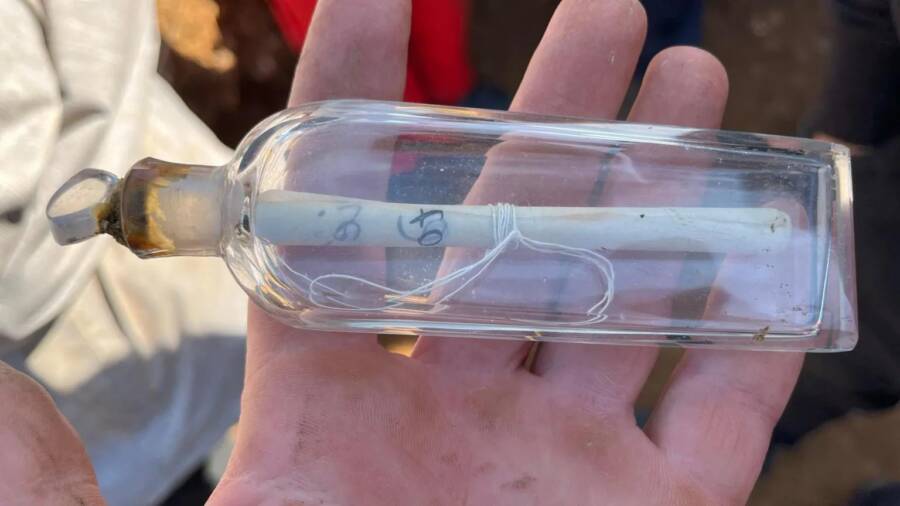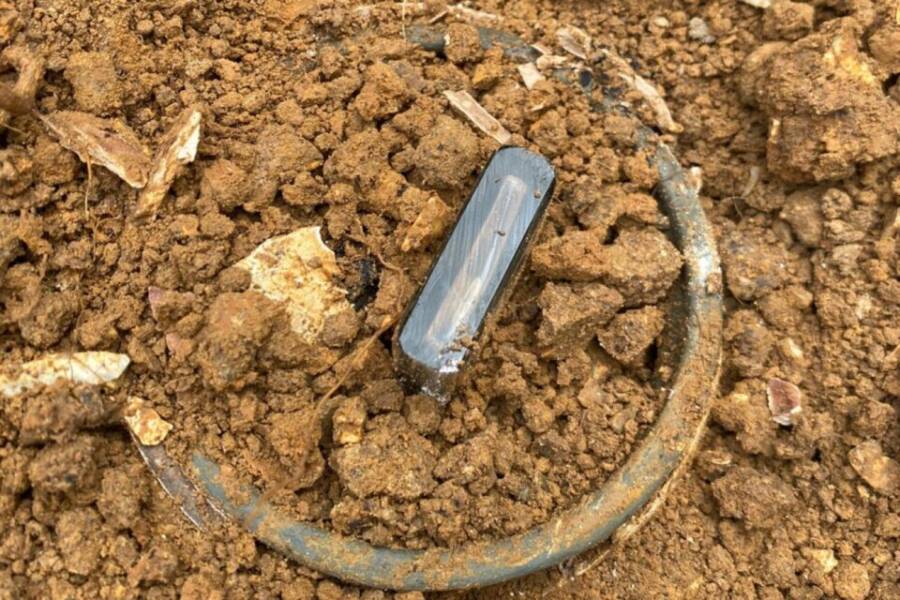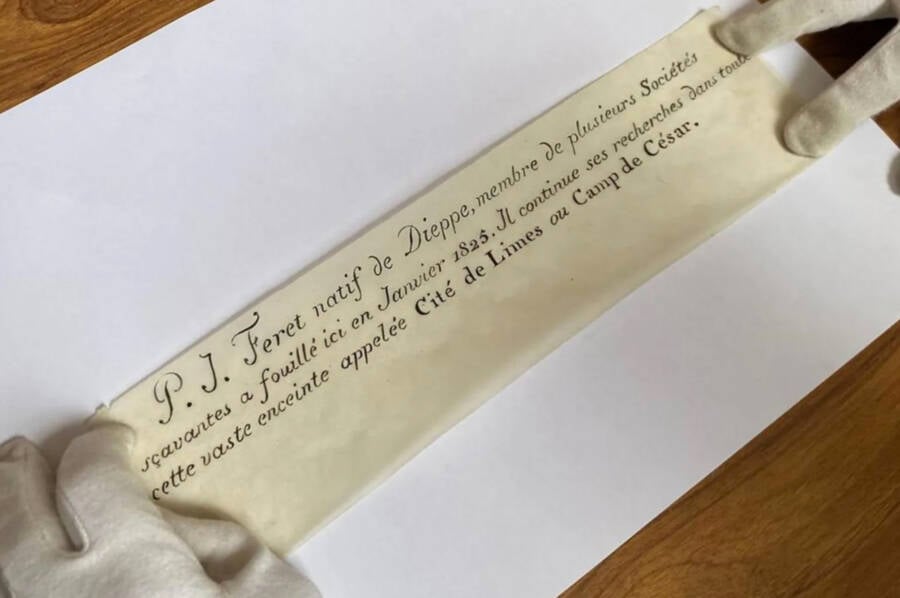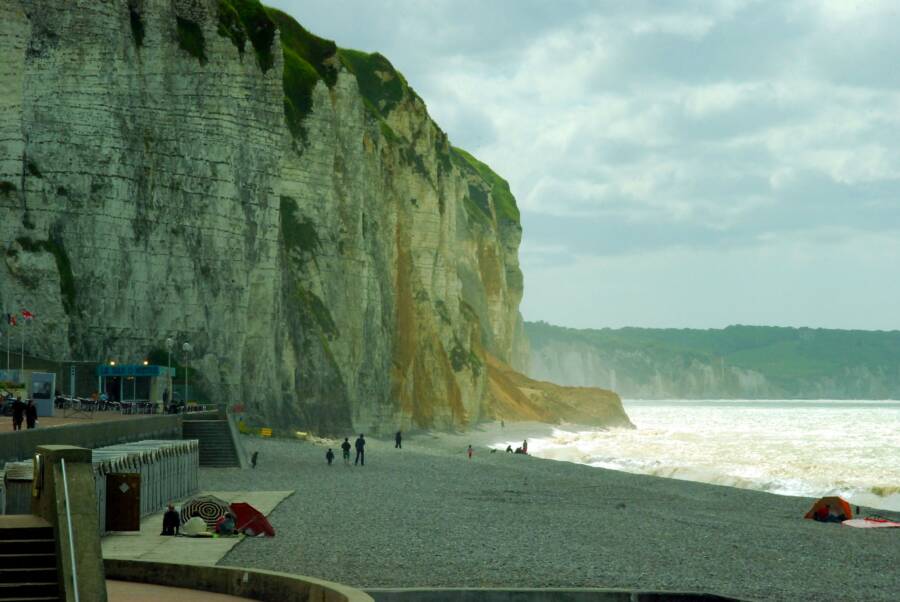Archaeologists digging at the remains of an ancient Gaulish village in the French town of Dieppe came across a note left by an archaeologist who'd worked at the same site in 1825.

Guillaume BlondelThe note was found tied with a string inside a small glass bottle recently unearthed in Dieppe, France.
Archaeologists expect to find relics from the past, but not relics left behind by other researchers just like them.
A team of student volunteers recently came across a particularly unusual artifact while digging at a site in northern France. During excavations of an historic Gaulish village, they found a message in a bottle written 200 years ago — by another archaeologist who’d excavated the same site.
The 200-Year-Old Message In A Bottle Found In Dieppe, France
As reported by BBC News, the 200-year-old note was found during an excavation in Dieppe, France, on the Normandy coast. A team of student volunteers was working on a dig at a Gaulish village called Caesar’s Camp when one spotted a strangely modern-looking object sitting atop a trench.

Guillaume BlondelArchaeologists knew that the glass vial was some kind of Gaulish artifact — but they had no idea what they were about to discover.
Guillaume Blondel, a local archaeologist and the leader of the dig, observed that the student had found a pot “covered with a small glazed cup.” Archaeologists could just make out a “white glass object sticking out of it.” And once they were assured that it wasn’t some kind of unexploded ordnance from World War II, they carefully began to excavate it.
Inside, they found a small glass bottle. Blondel described it as “a salt bottle like the ones women wore around their necks to breathe in to prevent fainting in their tight bodices.” And inside the bottle was a note, rolled up and tied with string.
The student archaeologists had plenty of guesses about what the note might contain. They speculated that it could be a love note or even an old recipe. But instead, the note turned out to be a message from a fellow archaeologist who’d placed it in the ground 200 years before.
Reading The Note Written By An Archaeologist In 1825

Guillaume BlondelThe note was left behind by archaeologist P.J Féret, who’d excavated the same site in January 1825.
As the student archaeologists looked on, Blondel donned white gloves and carefully unrolled the note. It read:
“P.J Féret, a native of Dieppe, member of various intellectual societies, carried out excavations here in January 1825. He continues his investigations in this vast area known as the Cité de Limes or Caesar’s Camp.”
As Blondel told his students, Féret was an archaeologist who worked in Dieppe, and the first person to examine the very site that they were now working on.
“He was the first to excavate and discover elements attesting to the Gallic presence,” Blondel explained.
Féret may have started the archaeological project at this site, but Blondel and his students hope to finish it — while they still have time. Government organizations in Normandy have identified the site as one of several which are “threatened by the retreat of the coastline.”
Already, much of it has disappeared. In Dieppe, for example, there was once a small Gallo-Roman temple. One corner of it remained in 1996; now it is gone completely.

Yusaini Usulludin/FlickrThe seaside cliffs of Dieppe, France, now succumbing to coastal erosion in certain areas.
Blondel, his team, and others are hoping to better understand the full breadth of these sites and to preserve them in maps and photos before they disappear entirely. As such, there’s still much more to learn, even though archaeologists like Ferét have already passed through long ago.
“Was it a place of habitation? A place of power? A place of temporary refuge?” Blondel wondered, before adding: “We don’t have an answer yet.”
After reading about the 200-year-old note left by a French archaeologist, look through these chilling photos of the Paris catacombs. Then, learn about the Dieppe Raid, the failed invasion of Nazi-occupied France that helped the Allies plan for D-Day.





